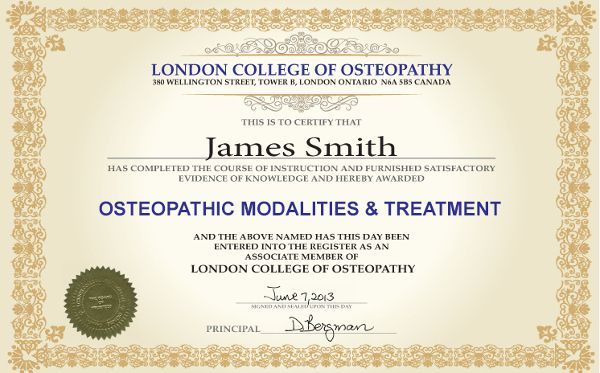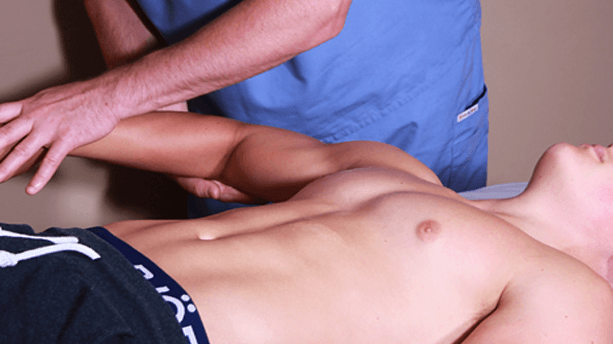Imparted as a series of ten lessons, the OMT course provides step-by-step coverage of the practical aspects of osteopathic treatment. Students learn how to take an age-appropriate case history and perform a physical examination using a specific osteopathic approach and testing system.
The concepts of ‘somatic dysfunction’ and ‘restrictive barriers‘ are explained through detailed graphics and video tutorials. Both direct and indirect osteopathic approaches are taught. This distinction refers to the direction of the practitioner’s force in relation to a perceived somatic dysfunction or motion preference.
At the end of this study, students become familiar with ten manual techniques used by osteopaths in the treatment of a wide range of health conditions. Overview of regional assessments is built around specific complaints (i.e. shoulder, knee, etc.) and treatment for those conditions. The OMT course explains the osteopathic approach to patient/client care, health promotion and disease prevention.
- Soft tissue technique is categorized as direct. It integrates specific manipulations that target soft tissues in a rhythmic, pressure-alternating fashion. Such methods as kneading, parallel traction, lateral and linear stretching, and direct inhibitory pressure are examined.
- Muscle energy technique is a direct technique that utilizes precise and voluntary contract-relax response of skeletal muscles around an affected joint. The aim of the technique is to improve the local function.
- High-velocity Low-amplitude is amongst the most commonly used by manual osteopaths. Also called the ‘thrust’ technique, it is helpful in addressing back pain, and upper- and lower extremity conditions.
- Strain-counterstain technique uses passive body positioning of spasmed muscles and affected joints towards the position of ‘ease” while releasing the muscle contraction by applying gentle force to pressure point.
- The joint mobilization technique is categorized as direct and involves passive amplification of joint movement through the engagement of an accessory joint movement.
- Myofascial release is a direct technique that includes stretching the muscle and associated connective tissue (fascia). The technique involves the application of a low load, long-duration stretch to the myofascial complex, intended to restore optimal length, decrease pain, and improve function.
- The balanced ligamentous tension technique utilizes an indirect approach. It involves the positioning of structures around a specific anatomic fulcrum in a position of ease. A release of a restriction occurs naturally in ligaments and interosseous membranes.
- Facilitated positional release is an indirect technique and is performed through passive positioning and shortening of muscular and ligamentous structures to facilitate relaxation of neuromuscular reflexes and resting tonicity.
- Techniques promoting lymphatic flow is a system of precise movements described as stimulatory, stroking, oscillatory, or vibratory. Thoracic Pump lymph drainage technique is a classical example that stimulates lymphatic flow. Exercises and techniques affecting muscle activity (e.g. direct pressure, stroking, effleurage) are taught.
- Osteopathy in a Cranial field is a set of specific gentle manipulations of cervical and occipital regions. It has proven to be effective in reducing pain caused by tension headaches and migraines.
Learning Material
Downloadable lecture presentations, online textbooks, video tutorials, handouts, readings
Evaluation
Four online quizzes. Final exam. Passing grade 75%.
Curriculum
Learning material is delivered through ten interactive online lessons and includes:
- downloadable lecture presentations
- video tutorials
- free digital textbooks
- self-assessment quizzes
- communication with a course instructor
- Certificate of Completion
- lifetime access to course updates
Upon registration, you will receive the login credentials to LCO’s online learning platform www.studyosteopathyonline.com and may begin your studies. Access to courses does not expire: you can follow your studies at a time and pace convenient for you from anywhere in the world.
Course Reviews
Certification
Click on the image below to view a certificate model

